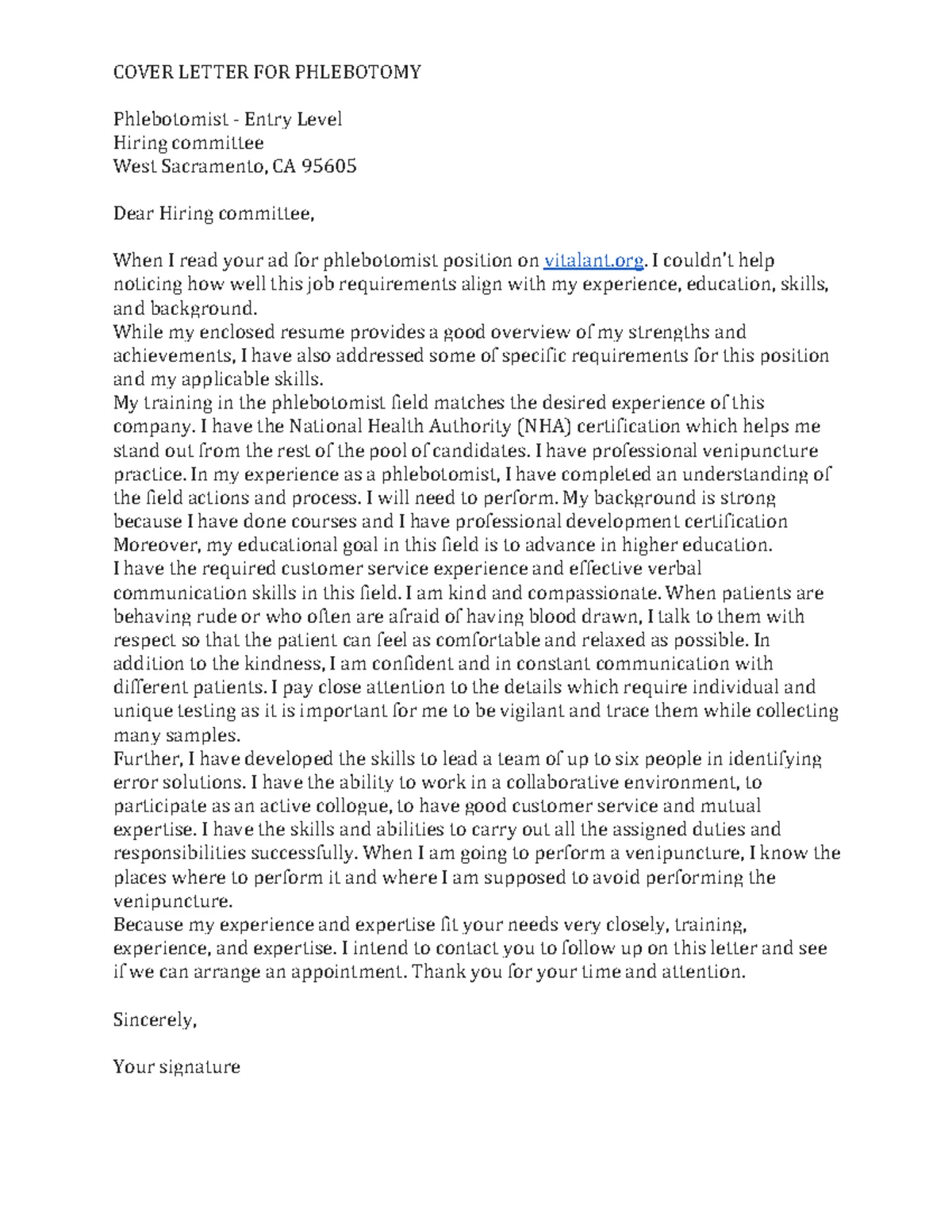Crafting a Phlebotomy Technician Cover Letter
A well-crafted phlebotomy technician cover letter is your first introduction to a potential employer. It’s your opportunity to make a strong impression, showcasing your skills, experience, and enthusiasm for the role. Unlike a resume, which provides a factual overview of your qualifications, a cover letter allows you to personalize your application and demonstrate why you’re the ideal candidate. It’s crucial to dedicate time and effort to create a compelling cover letter that grabs the hiring manager’s attention and encourages them to learn more about you. This guide will provide you with the essential steps and insights to craft a winning cover letter, increasing your chances of landing your dream phlebotomy position. A strong cover letter is more than just a formality; it is a strategic tool to set yourself apart.
Understanding the Purpose of a Cover Letter
The primary purpose of a cover letter is to introduce yourself and express your interest in a specific job. It serves as a bridge between your resume and the employer, providing context and highlighting the most relevant aspects of your qualifications. A well-written cover letter should clarify why you are interested in the position, what skills and experiences you bring to the table, and how you can contribute to the organization’s goals. It is also a chance to showcase your personality and communication skills, demonstrating your professionalism and attention to detail. By articulating your career aspirations and explaining why you are a good fit for the role, you can significantly increase your chances of being invited for an interview. Therefore, the cover letter should not only present your qualifications but also highlight your motivation and your understanding of the employer’s needs.
Key Components of a Phlebotomy Technician Cover Letter
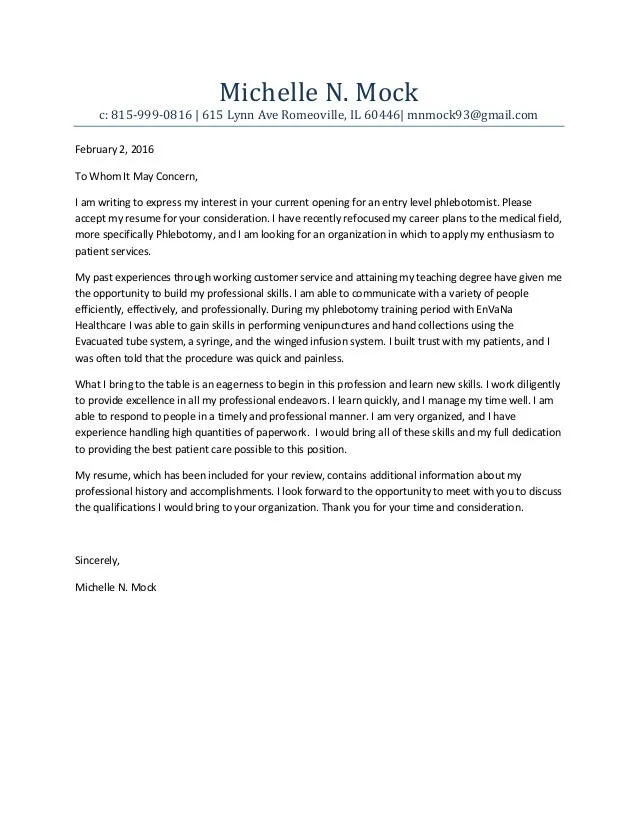
A successful phlebotomy technician cover letter comprises several key components, each playing a crucial role in making a positive impression. Structuring your cover letter effectively ensures that your message is clear, concise, and compelling. The essential parts include your header with contact information, a professional greeting, well-structured body paragraphs, and a strong closing. Each of these sections should be carefully crafted to ensure your cover letter effectively communicates your skills and enthusiasm. Proper formatting, including clear headings and logical flow, is also vital for readability. A well-organized cover letter makes it easier for the hiring manager to quickly understand your qualifications and assess your suitability for the role. Make sure that all the components work together to create a cohesive and persuasive document.
Header and Contact Information
The header of your cover letter should include your full name, address, phone number, and email address. It’s essential to use a professional-looking email address. If possible, include a link to your LinkedIn profile. Following this, include the date and the recipient’s information (hiring manager’s name, title, company name, and address). This information should be formatted clearly and consistently, typically aligned to the left or right of the page. Accuracy is key here; ensure all contact details are correct to allow employers to easily reach you. Presenting this information professionally sets the tone for the rest of the letter and demonstrates your attention to detail, a crucial skill in healthcare.
Professional Greeting
Start your cover letter with a professional greeting, ideally addressing the hiring manager by name. If you can’t find the hiring manager’s name, use a general greeting such as “Dear Hiring Manager” or “Dear [Department Name] Team.” Avoid generic greetings like “To Whom It May Concern,” which can seem impersonal. Using the hiring manager’s name shows that you’ve done your research and are genuinely interested in the position. A personalized greeting demonstrates respect and makes your cover letter stand out from the generic applications. Correct spelling and proper titles (Mr., Ms., Dr., etc.) are essential when addressing the hiring manager. This attention to detail demonstrates professionalism and respect, which is a positive characteristic in a healthcare setting.
Body Paragraphs
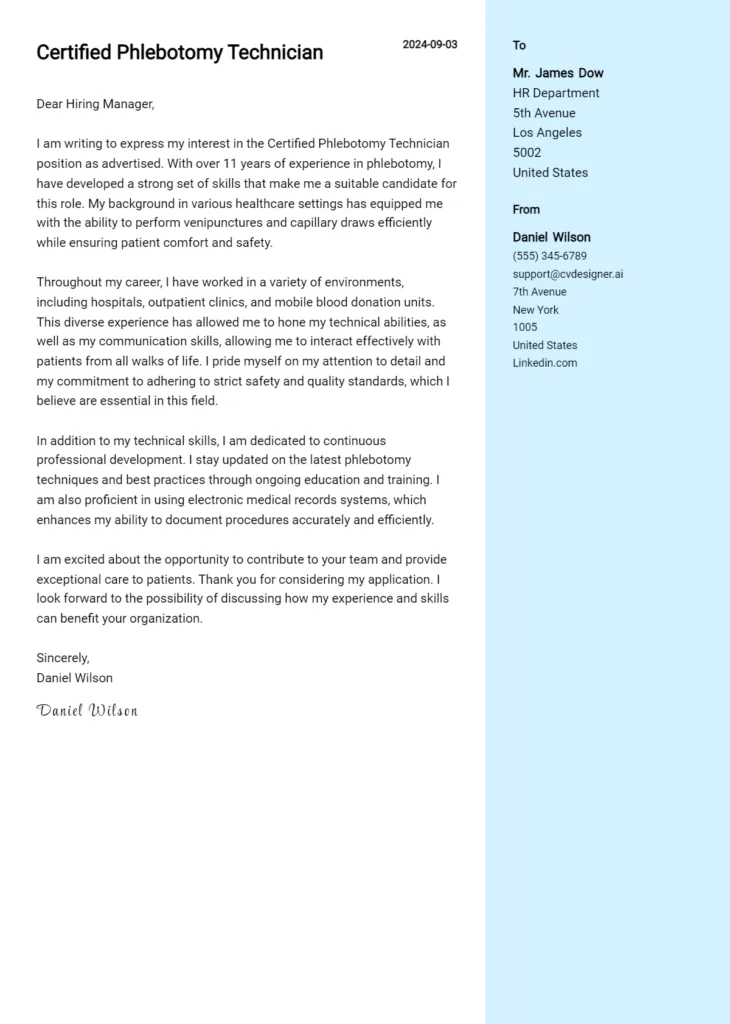
The body paragraphs are the core of your cover letter, where you showcase your skills, experience, and enthusiasm. The body should include at least two or three paragraphs, each focusing on a specific aspect of your qualifications. In the first paragraph, state the position you are applying for and how you learned about it. Then, explain why you’re interested in the role and the organization. In the subsequent paragraphs, elaborate on your relevant skills and experience. Use specific examples to illustrate your abilities, such as drawing blood, handling patient interactions, and following safety protocols. Always tailor your letter to match the job description, emphasizing the skills and experiences that are most relevant to the position. Quantify your achievements whenever possible. Finally, express your enthusiasm for the opportunity and reiterate your interest in the position.
Highlighting Relevant Skills and Experience
When highlighting your skills and experience, focus on those most relevant to the phlebotomy technician role. Mention your proficiency in venipuncture, capillary punctures, and patient preparation. Detail your experience in handling different types of patients, including infants, children, and elderly individuals. Discuss your familiarity with various lab procedures, equipment, and safety protocols. Showcase your ability to maintain accurate records, handle sensitive information with discretion, and work effectively as part of a healthcare team. Provide specific examples of your experience. For instance, you could mention the number of blood draws you performed, any special techniques you’ve mastered, or any challenges you overcame. Refer to the job description to ensure you address the key requirements and demonstrate how your skills align with the employer’s needs. Use action verbs to describe your accomplishments.
Emphasizing Certification and Training
Certification is a crucial requirement for phlebotomy technicians. In your cover letter, clearly state your phlebotomy certification and the issuing organization. Include the certification number and expiration date, if applicable. Highlight any specialized training, such as advanced phlebotomy techniques, pediatric phlebotomy, or point-of-care testing. If you have any additional certifications, such as CPR or first aid, include them. Emphasize any relevant education, such as a diploma or associate’s degree in phlebotomy or a related field. Showcase any continuing education or professional development courses you have completed to show your commitment to staying current in the field. Clearly stating your qualifications demonstrates your commitment to excellence and ensures that the hiring manager knows you meet the essential job requirements. Your certifications directly prove your ability to safely and effectively perform phlebotomy procedures.
Tailoring Your Letter to the Job Description
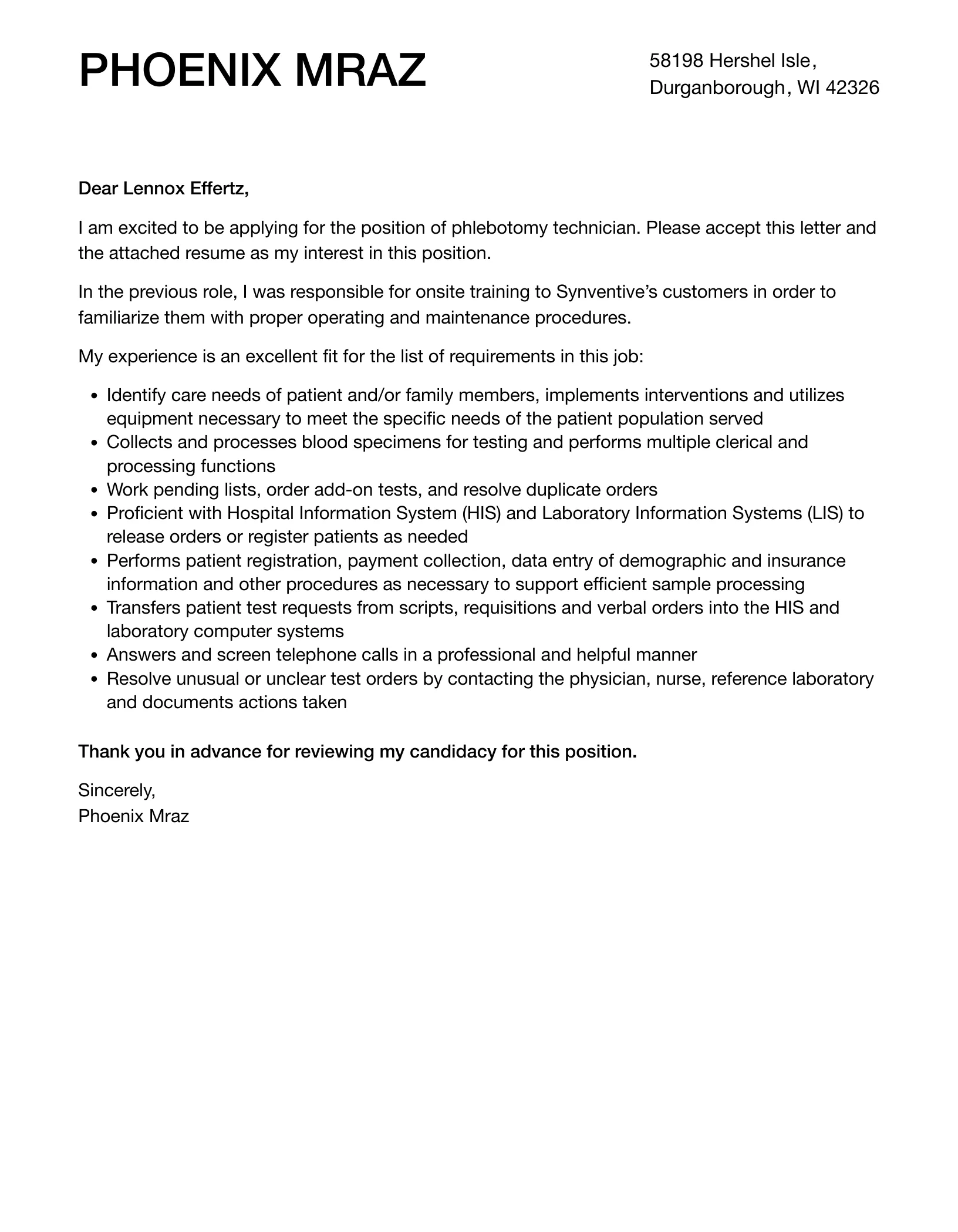
Customizing your cover letter to match the specific job description is essential for demonstrating your interest and suitability for the role. Carefully review the job description and identify the key skills, experience, and qualifications the employer is seeking. Use the same keywords and phrases from the job description in your cover letter to show that you understand the requirements. Provide examples that demonstrate how your skills and experience align with the employer’s needs. If the job description emphasizes patient interaction, highlight your communication skills and ability to build rapport with patients. If the role requires experience with specific equipment or procedures, include details about your proficiency in those areas. Demonstrating that you’ve read and understood the job description shows your attention to detail, initiative, and genuine interest in the position.
Quantifying Achievements and Results
Whenever possible, quantify your achievements to demonstrate your impact and value. Instead of simply stating that you have experience, provide specific numbers or data to support your claims. For example, instead of saying, “I have experience drawing blood,” you could say, “Performed an average of 50 blood draws per day with a 98% success rate.” Quantifying your achievements makes your accomplishments more concrete and impactful. Examples include the number of patients you’ve assisted, the accuracy of your sample collection, or any improvements you made to the workflow. Providing data shows that you’re not only skilled but also results-oriented. Including quantifiable achievements shows that you understand how your performance directly contributes to the success of the organization. This makes your cover letter significantly more persuasive.
Expressing Enthusiasm and Interest
Expressing your enthusiasm and genuine interest in the position is crucial for making a positive impression. Show that you have researched the organization and understand its mission and values. Explain why you are excited about the opportunity to work there and what you hope to contribute. Demonstrate your passion for phlebotomy and your commitment to providing excellent patient care. Avoid generic statements. Instead, tailor your enthusiasm to the specific role and organization. If the organization is known for its patient-centered care or technological advancements, mention how those aspects align with your career goals. Your enthusiasm should be genuine and reflect your personality. A cover letter that expresses passion often stands out and leaves a lasting impression, signaling your commitment to the role and the organization.
Closing Your Cover Letter
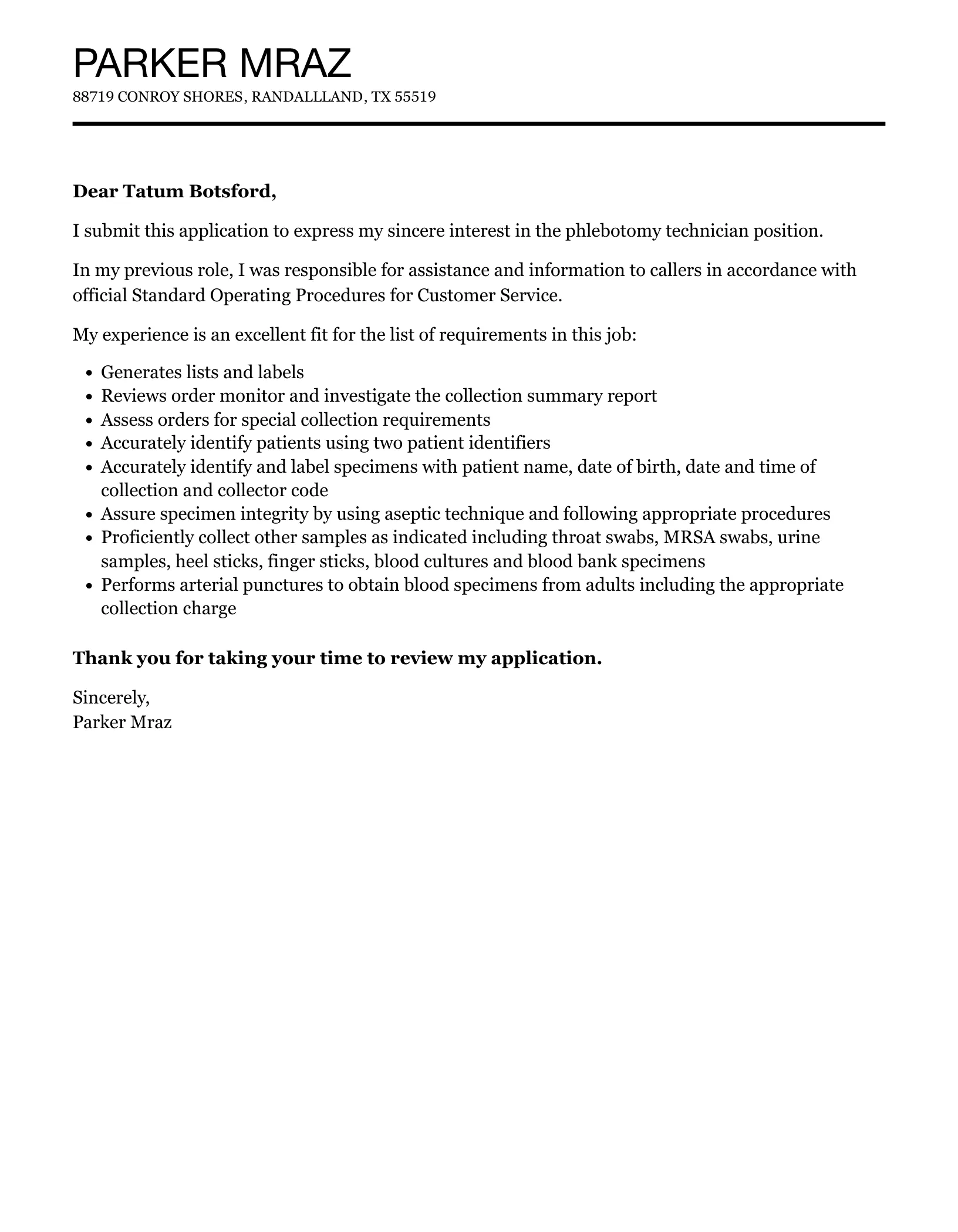
The closing paragraph should reiterate your interest in the position and express your gratitude for the hiring manager’s time and consideration. It should also include a call to action, inviting the employer to contact you for an interview. This is your last chance to make a strong impression and encourage the employer to take the next step. Keep the closing brief and professional. Restate your enthusiasm for the role and your confidence in your abilities. Make it easy for the hiring manager to contact you by including your phone number and email address, if you haven’t already. A strong closing leaves a positive, lasting impression and significantly increases the likelihood of your application being considered.
Formal Closing and Signature
Close your cover letter with a formal salutation. Use phrases such as “Sincerely,” “Best regards,” or “Respectfully.” Avoid casual closings like “Thanks” or “Cheers.” Below your closing, leave space for your handwritten signature if you are submitting a printed version. If submitting electronically, you can either scan your signature or simply type your name. Make sure your typed name is clear and easy to read. Ensure consistency between your closing and your tone throughout the letter. A formal closing reinforces your professionalism and attention to detail. Your signature (or typed name) marks the end of the letter, leaving a lasting impression of your professionalism and your eagerness to join the organization.
Proofreading and Editing Your Cover Letter
Proofreading and editing your cover letter is essential for ensuring accuracy and professionalism. Carefully review your cover letter for any spelling, grammar, punctuation, or formatting errors. Use a grammar checker, but also read the letter aloud to catch any awkward phrasing or sentence structure issues. Pay close attention to the tone of your letter and make sure it is appropriate for the healthcare environment. Ensure that all the information is correct and consistent with your resume and other application materials. Proofreading helps you correct any typos or formatting errors. A flawless cover letter reflects your attention to detail and professionalism. Ideally, have another person review your letter for a second opinion. A fresh pair of eyes can catch mistakes you might have missed.
Common Mistakes to Avoid
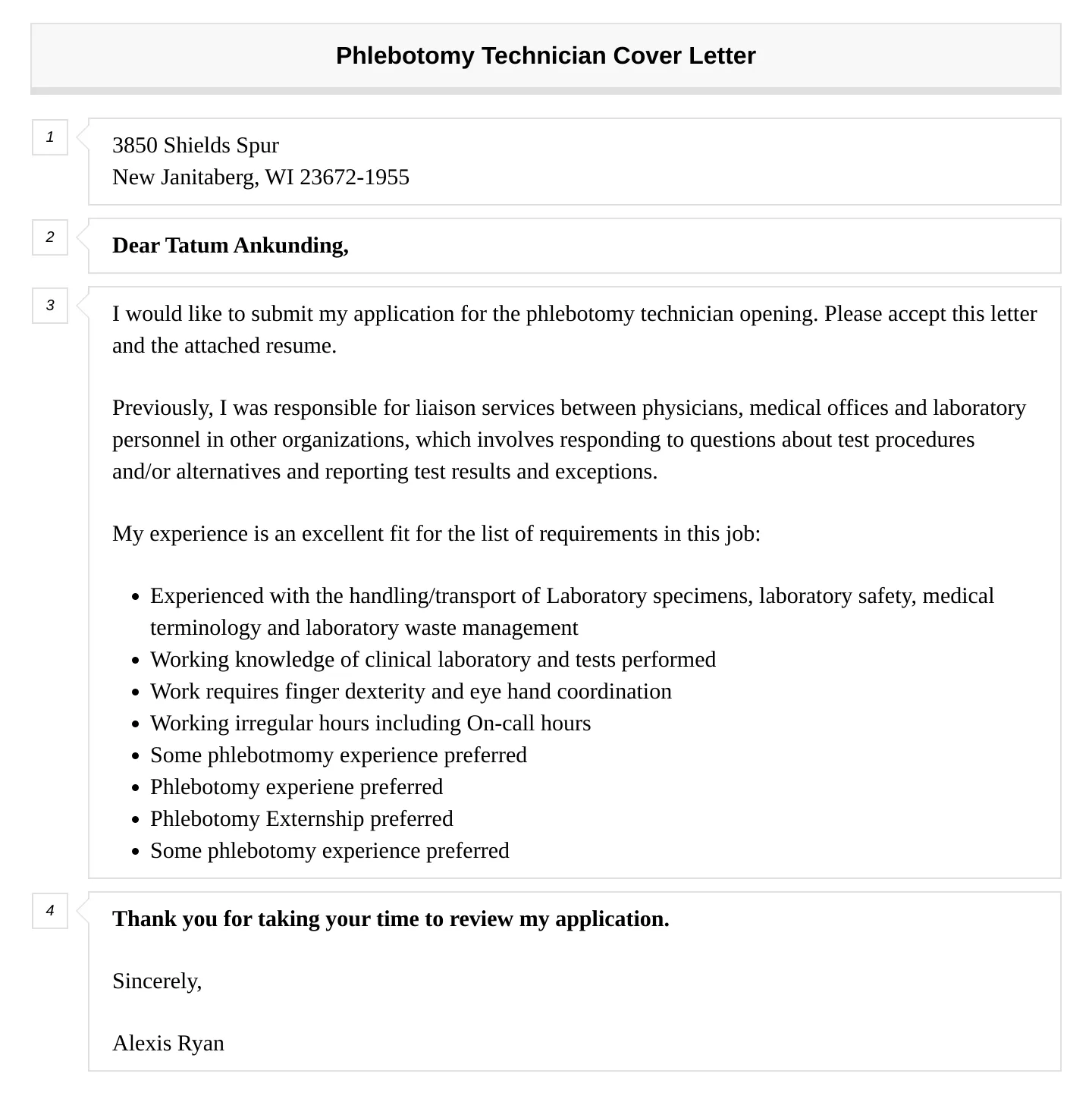
Avoid making common mistakes that can undermine your application. One of the biggest mistakes is sending a generic cover letter that isn’t tailored to the specific job. Other common errors include grammatical errors, typos, and a lack of clarity. Avoid being overly casual or using slang, and never include negative information about your previous employers. Refrain from providing false or misleading information. Don’t exceed the recommended length of a cover letter (usually one page). Do not repeat information that’s already in your resume. Proofread your cover letter carefully to ensure it is free of errors. A well-written cover letter avoids these common mistakes, leaving a strong positive impression with the hiring manager. Addressing these issues will significantly improve your chances of securing an interview.
Reviewing Examples and Templates
Reviewing phlebotomy technician cover letter examples and templates can be beneficial for learning and adapting your approach. Search online for examples of successful cover letters to get ideas about structure, content, and tone. Use templates as a starting point, but always customize them to reflect your skills and experience. Pay attention to how the examples highlight key skills, quantify achievements, and express enthusiasm. Adapt the language and examples to match your qualifications and the job requirements. Use different examples as inspiration. Ensure your cover letter is unique and reflects your personal brand. Analyzing successful cover letters can improve your understanding of the industry. Remember to tailor any template you use to the specific job application, personalizing it.
Formatting Your Cover Letter
Effective formatting contributes to your cover letter’s readability and professionalism. Use a standard font, such as Times New Roman, Arial, or Calibri, in a size between 10 and 12 points. Ensure your margins are consistent and set to one inch on all sides. Use single spacing for the body of the letter and double spacing between paragraphs. Use a clear and easy-to-read font. Use bolding for headings and subheadings to break up the text. Use bullet points if necessary to highlight key skills or experiences. Ensure the layout is clean and uncluttered. The goal is to create a document that is visually appealing and easy to read. Correct formatting reflects your attention to detail and professionalism, increasing your chances of getting noticed.
Ensuring Readability and Professionalism
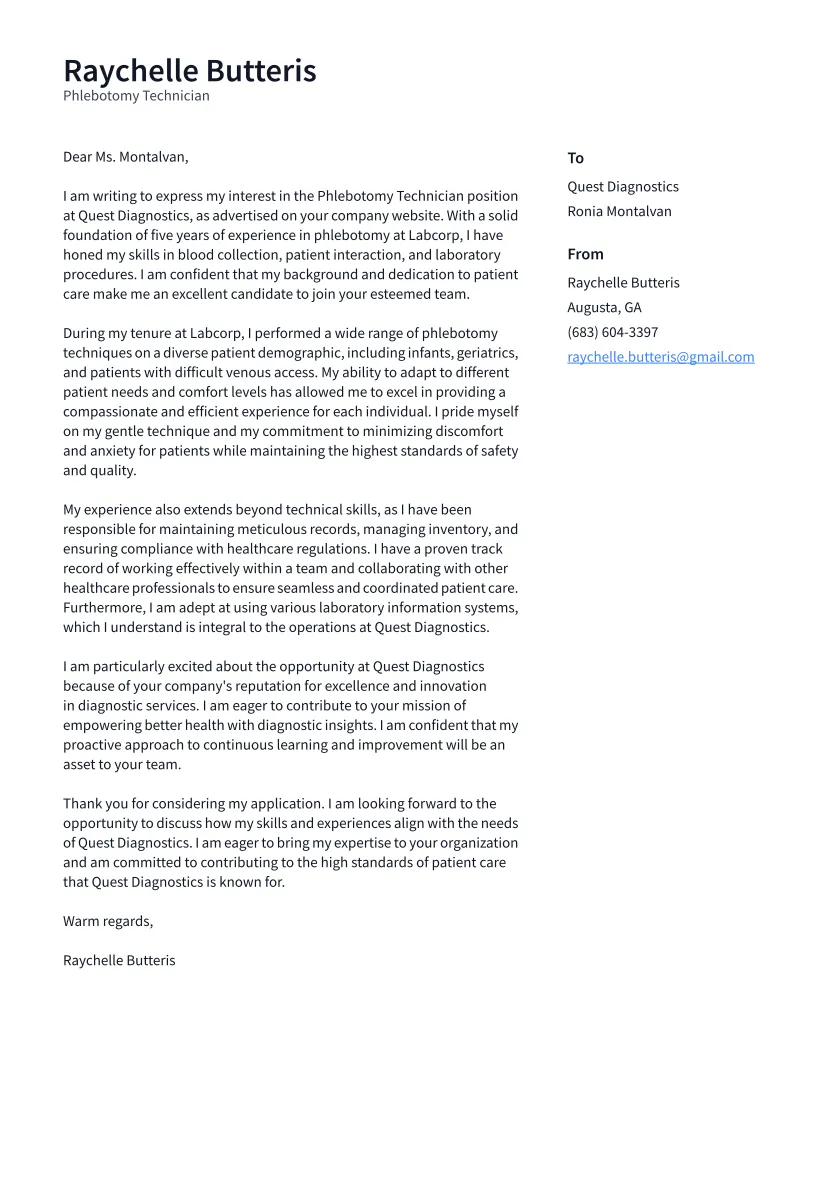
Your cover letter should be clear, concise, and easy to read. Use simple language and avoid jargon or overly complex sentences. Keep your paragraphs short and focused. Break up long blocks of text with headings, bullet points, and white space. Ensure your writing style is professional and appropriate for the healthcare industry. Avoid being overly informal or casual. Keep your tone positive and enthusiastic. Proofread your letter to eliminate any errors in grammar, punctuation, and spelling. A readable and professional cover letter shows that you value clarity, attention to detail, and respect the employer’s time. Prioritize clarity and readability to help the hiring manager quickly assess your qualifications.
Submitting Your Cover Letter
Carefully follow the instructions provided by the employer for submitting your cover letter and resume. Pay close attention to the required file format (e.g., PDF, Word document) and naming conventions. If submitting electronically, ensure your cover letter and resume are in a professional format. If the employer asks for a hard copy, print your cover letter on high-quality paper. Always double-check all the attachments before submitting to ensure you haven’t missed anything. Proper submission shows your attention to detail and respect for the employer’s hiring process. By following the application guidelines precisely, you demonstrate your professionalism and increase your chances of being considered for the position.
Following Application Instructions
Carefully adhering to the application instructions is essential for making a positive impression. Read all the instructions thoroughly before starting your application. Note the required file formats, naming conventions, and submission methods. If the employer asks for specific information, provide it. If there’s a preferred method for contact, use it. Avoid submitting materials late or in the wrong format. If there are specific questions, answer them thoroughly and accurately. Always comply with the employer’s instructions to the letter. Your ability to follow instructions reflects your attention to detail, initiative, and ability to follow directions—all of which are important for phlebotomy positions. Taking the time to follow the application instructions properly shows the hiring manager that you value the employer’s process and that you are a serious candidate.
Next Steps After Submission
After submitting your cover letter and resume, the next steps involve waiting for a response and preparing for a potential interview. Monitor your email and phone for any communication from the employer. If you haven’t heard back within a reasonable timeframe (usually a few weeks), you may consider sending a polite follow-up email. When waiting, take the opportunity to research the organization, practice your interviewing skills, and prepare for common interview questions. Be ready to discuss your skills, experience, and career goals. If you receive an interview invitation, express your gratitude and confirm your availability. This signifies your interest in the role and your readiness to move forward. After the interview, send a thank-you note to the interviewer, reiterating your interest and highlighting key points. Following up shows your initiative.
